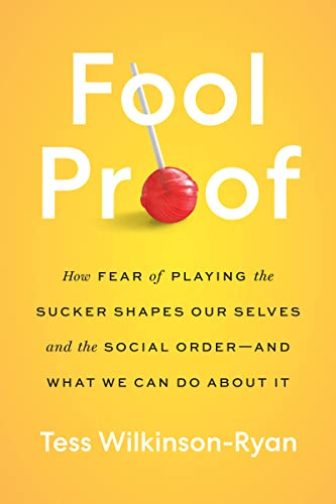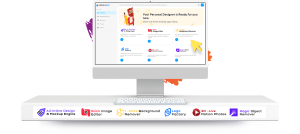-
Table of Contents
Introduction
Infographics are a powerful tool for social media marketing. They can convey complex information in a visually appealing and easy-to-understand format. However, creating an effective infographic requires careful planning and design. In this article, we will discuss the key elements of creating an effective infographic for social media marketing.
$19.69
$32.00
Learn more
 Amazon.com
Amazon.com
 Amazon.com
Amazon.com
Last update was on: January 28, 2024 7:48 am
Design Tips for Creating Eye-Catching Infographics for Social Media
Infographics are a powerful tool for social media marketing. They are visually appealing, easy to understand, and can convey complex information in a simple and engaging way. However, creating effective infographics requires more than just throwing together some images and text. To truly make an impact, your infographics need to be well-designed, visually appealing, and easy to read. In this article, we will share some design tips for creating eye-catching infographics for social media. First and foremost, it is important to choose a topic that is relevant and interesting to your target audience. Your infographic should provide valuable information that your audience will find useful and engaging. Once you have chosen your topic, it is time to start designing your infographic. One of the most important design elements of an infographic is the layout. Your layout should be clean, organized, and easy to follow. Use a grid system to ensure that your elements are aligned and spaced evenly. This will help to create a sense of order and make your infographic easier to read. Another important design element is color. Choose a color scheme that is visually appealing and complements your topic. Use contrasting colors to make important information stand out. However, be careful not to use too many colors, as this can make your infographic look cluttered and confusing. Typography is also an important design element to consider. Choose a font that is easy to read and complements your topic. Use different font sizes and styles to create hierarchy and emphasize important information. However, be careful not to use too many different fonts, as this can make your infographic look unprofessional. Icons and illustrations can also be used to enhance your infographic. Use icons to represent data and illustrate concepts. Use illustrations to add visual interest and break up large blocks of text. However, be careful not to use too many icons and illustrations, as this can make your infographic look cluttered and confusing. Finally, it is important to optimize your infographic for social media. Make sure that your infographic is the right size and format for the social media platform you are using. Use a high-quality image that is easy to read and visually appealing. Add a catchy title and description to entice people to click and share your infographic. In conclusion, creating effective infographics for social media marketing requires careful planning and attention to detail. Choose a relevant and interesting topic, use a clean and organized layout, choose a visually appealing color scheme, use easy-to-read typography, and enhance your infographic with icons and illustrations. Finally, optimize your infographic for social media by using the right size and format, adding a catchy title and description, and using a high-quality image. By following these design tips, you can create eye-catching infographics that will engage your audience and help to promote your brand.How to Use Infographics to Boost Engagement and Drive Traffic on Social Media
Infographics are a powerful tool for social media marketing. They are visually appealing, easy to understand, and can convey complex information in a simple and engaging way. In fact, studies have shown that infographics are shared and liked on social media three times more than any other type of content. So, if you want to boost engagement and drive traffic on social media, creating effective infographics is a must.
Here are some tips on how to create effective infographics for social media marketing:
1. Choose a Topic
The first step in creating an effective infographic is to choose a topic that is relevant to your audience. You can use social media analytics to find out what topics are popular among your followers. Once you have a topic, do some research and gather data that supports your message.
2. Keep it Simple
Infographics are meant to simplify complex information, so keep your design simple and easy to understand. Use clear and concise language, and avoid cluttering your infographic with too much text or graphics. Stick to a color scheme that is easy on the eyes and use contrasting colors to highlight important information.
3. Use Visuals
Visuals are the heart of an infographic, so use them wisely. Choose images and graphics that are relevant to your topic and support your message. Use icons and symbols to represent data and statistics, and use charts and graphs to show trends and patterns.
4. Tell a Story
Infographics are more than just a collection of data and statistics. They should tell a story that engages your audience and leaves them with a clear message. Use a narrative structure to guide your audience through your infographic, and use headings and subheadings to break up your content into digestible chunks.
5. Make it Shareable
The whole point of creating an infographic is to share it on social media, so make sure it is shareable. Use social media icons to make it easy for your audience to share your infographic on their own social media channels. You can also add a call-to-action at the end of your infographic to encourage your audience to share it with their friends and followers.
6. Optimize for SEO
Infographics are not only great for social media marketing, but they can also help boost your website’s SEO. Make sure to optimize your infographic for search engines by including relevant keywords in your title, description, and alt tags. You can also embed your infographic on your website and include a link back to your website in the description.
In conclusion, creating effective infographics for social media marketing is a powerful way to boost engagement and drive traffic on social media. By choosing a relevant topic, keeping your design simple, using visuals, telling a story, making it shareable, and optimizing for SEO, you can create infographics that are not only visually appealing but also effective in conveying your message to your audience. So, start creating your own infographics today and watch your social media engagement soar!
5 Key Elements of a Successful Infographic for Social Media Marketing
Infographics have become a popular tool for social media marketing. They are visually appealing and can convey complex information in a simple and easy-to-understand way. However, not all infographics are created equal. To create an effective infographic for social media marketing, there are five key elements that you need to consider. 1. Clear and Concise Message The first key element of a successful infographic is a clear and concise message. Your infographic should have a specific purpose and communicate a message that is easy to understand. It should be focused on a single topic or idea, and the information should be presented in a logical and organized manner. 2. Eye-catching Design The second key element of a successful infographic is an eye-catching design. Your infographic should be visually appealing and grab the attention of your target audience. Use colors, fonts, and images that are consistent with your brand and make sure that the design is easy to read and understand. 3. Relevant Data The third key element of a successful infographic is relevant data. Your infographic should be based on accurate and up-to-date data that is relevant to your target audience. Use data that supports your message and helps to illustrate your point. 4. Shareability The fourth key element of a successful infographic is shareability. Your infographic should be easy to share on social media platforms. Make sure that it is optimized for social media by including social sharing buttons and embedding codes. You can also create a landing page for your infographic that includes a call-to-action to encourage people to share it.
£16.00
£59.99
Learn more
 udemy.com
udemy.com
Last update was on: January 28, 2024 7:48 am
5. Call-to-Action
The fifth and final key element of a successful infographic is a call-to-action. Your infographic should have a clear and compelling call-to-action that encourages your target audience to take action. This could be anything from signing up for a newsletter to making a purchase. Make sure that your call-to-action is relevant to your message and easy to follow.
In conclusion, creating an effective infographic for social media marketing requires careful planning and attention to detail. By focusing on these five key elements, you can create an infographic that is not only visually appealing but also communicates a clear and concise message, is based on relevant data, is easy to share, and includes a compelling call-to-action. With the right approach, infographics can be a powerful tool for engaging your target audience and driving traffic to your website.
Conclusion
To create effective infographics for social media marketing, it is important to choose a relevant and interesting topic, use clear and concise language, incorporate eye-catching visuals, and ensure that the design is visually appealing and easy to read. Additionally, it is important to consider the platform on which the infographic will be shared and optimize the size and format accordingly. By following these guidelines, businesses can create infographics that effectively communicate their message and engage their target audience on social media. Learn how to create effective infographics for social media marketing by clicking on this link: https://shorturl.at/eqyX0.-
Table of Contents
Introduction
Social proof is a psychological phenomenon that refers to the tendency of people to conform to the actions and opinions of others in order to make decisions. In the context of marketing and sales, social proof can be a powerful tool for influencing customer decisions. By showcasing positive reviews, testimonials, and endorsements from satisfied customers, businesses can build trust and credibility with potential buyers, and increase the likelihood of a purchase. In this article, we will explore the different types of social proof and how they can be used to influence customer decisions.
$19.69
$32.00
Learn more
 Amazon.com
Amazon.com
 Amazon.com
Amazon.com
Last update was on: January 28, 2024 7:48 am
The Importance of Social Proof in Marketing Strategies
As consumers, we are constantly bombarded with advertisements and marketing messages. It can be overwhelming to try and make a decision about which product or service to choose. That’s where social proof comes in. Social proof is the idea that people are more likely to make a decision based on the actions of others. It’s a powerful tool that can be used to influence customer decisions and is an essential part of any successful marketing strategy. The importance of social proof in marketing cannot be overstated. It’s a psychological phenomenon that has been studied extensively and has been shown to have a significant impact on consumer behavior. When people see that others are using a product or service, they are more likely to believe that it is a good choice. This is because we tend to trust the opinions of others, especially those who are similar to us. One of the most common forms of social proof is customer reviews. Online reviews have become a crucial part of the decision-making process for many consumers. In fact, a recent study found that 91% of people read online reviews before making a purchase. This is because reviews provide valuable information about the product or service from people who have already used it. Positive reviews can be a powerful motivator for potential customers, while negative reviews can be a warning sign to stay away. Another form of social proof is endorsements from influencers or celebrities. When a celebrity or influencer promotes a product or service, it can have a significant impact on consumer behavior. This is because people tend to trust the opinions of those they admire or look up to. Endorsements can also help to increase brand awareness and credibility. Social proof can also be demonstrated through social media. When people see that others are using a product or service on social media, it can create a sense of FOMO (fear of missing out). This can be a powerful motivator for people to try the product or service for themselves. Social media can also be used to showcase customer testimonials and reviews, further reinforcing the idea that the product or service is a good choice. In addition to these forms of social proof, there are many other ways that it can be used in marketing. For example, displaying the number of customers who have purchased a product or service can create a sense of popularity and credibility. Using social proof in marketing can help to build trust with potential customers and increase the likelihood that they will make a purchase.
£16.00
£59.99
Learn more
 udemy.com
udemy.com
Last update was on: January 28, 2024 7:48 am
In conclusion, social proof is an essential part of any successful marketing strategy. It’s a powerful tool that can be used to influence customer decisions and build trust with potential customers. Whether it’s through customer reviews, endorsements from influencers, or social media, social proof can help to increase brand awareness and credibility. As consumers, we are more likely to make a decision based on the actions of others, and social proof provides the evidence we need to make an informed choice. So, if you’re looking to improve your marketing strategy, make sure to incorporate social proof into your plan.





































